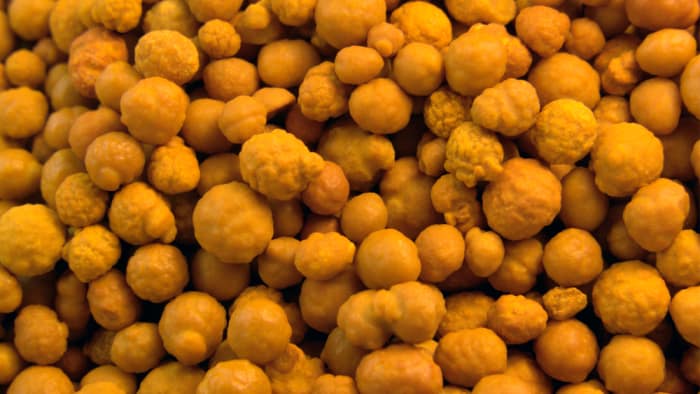The hydrolysis of iron(III) chloride
Interaction of iron(III) chloride with water

The hydrolysis of iron(III) chloride is the cationic reaction of the salt with water. Cationic hydrolysis is possible because the salt, iron(III) chloride, formed by a weak base (iron(III) hydroxide Fe(OH)₃) and a strong acid (hydrochloric acid HCl). The ions from the water molecules attach to the cation of the hydroxide, Fe³⁺.
Iron(III) chloride: characteristics

Iron(III) chloride is a neutral, highly-soluble salt with the formula FeCl₃. It is a crystalline powder, and changes colors depending on the angle of incoming light (from black-brown to purple, dark red, and even green in reflected light).
After hydrolysis, the salt forms a yellow, acidic solution.

FeCl₃ is used:
- as a catalyst of organic synthesis;
- as a coagulant in one of the stages of water purification;
- to stain copper in electroplating;
- in medicine.
Click here for amazing experiments exploring the properties of iron and its compounds.
Hydrolysis of iron chloride — nature of the reaction
The reaction takes place in hot water. Like standard hydrolysis reactions, the interaction of iron(III) chloride with water takes place in several stages.

First, iron(III) chloride dissociates:
FeCl₃ → Fe³⁺ +3Cl⁻
Then the iron cation reacts with water:
Fe³⁺ + НOH → FeOH²⁺ + H⁺ (hydrolysis begins)
Then with another water molecule:
FeOH²⁺ + HOH ↔ Fe(OH)₂⁺ + H⁺
And the final stage:
Fe(OH)₂⁺ + HOH ↔ Fe(OH)₃↓ + H⁺
The hydrolysis of iron(III) chloride is reversible.